As many of you probably already know, despite the funny circumstances of our first encounter, Mr. Schindler became one of my most important collectors and a good friend over the years.
Since he just comes by for a visit to my studio, which I normally keep private, he was always one of the first to see new paintings. His collection well documents how my work evolved over time.
For some 30 years now, I've been woorking on developing a new kind of reverse glass painting, to create more "transparency" and depth with this beautiful old technique. One of my approaches is to use graphite pencil and watercolor, but that is very hard to control on glass. So, eventually I sarted experimenting with oils. The very first piece "Sunday Afternoon" done this way became part of the Schindler colection.
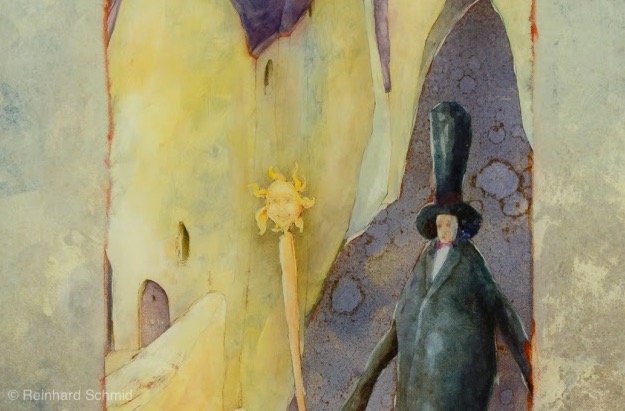
For my glass originals I always make a hand made frame. What is interesting about this one, is the way, the glass is mounted. Not "behind" the frame, as one would normally do, but fit in a very thin tin profile and then connected to the front of the actual frame.
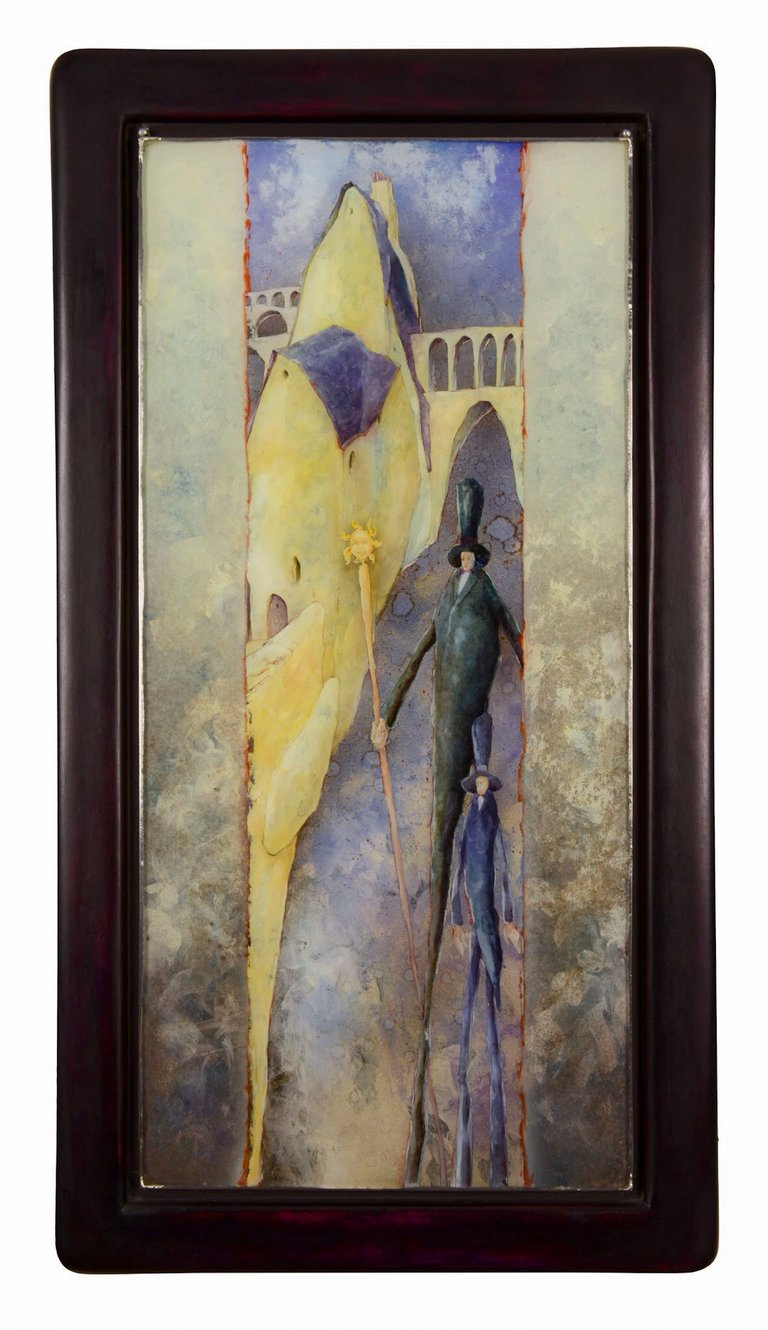
I enjoy reading your comments!
❤
If you like my work, of course I appreciate your upvotes and resteems
All photos/scans by me of my own artwork done in my special technique as introduced in What is Hinterglas?
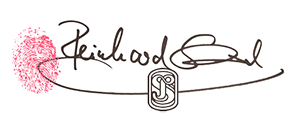

See more of my work on BeScouted

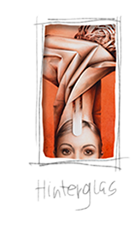
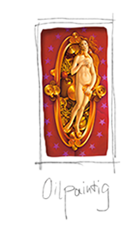
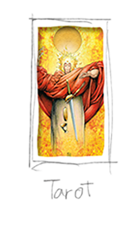
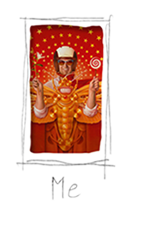
This early work still has your humour and brightness, so of course, I love it.
It's so fascinating to see how you develop the process. I have always been enamored of reverse glass painting and seek it out often in museums, we even have some good older examples in places around her, it being very popular in Victorian times. I just love your take on it.
Playing in the studio more now, I thought about attempting some. What made me consider it was when I print make I often use plexi glass or perspect sheets on which I lay out metal tape, pieces of things cut paper or etch into it to make the 'plate' from which to print. And I held up one of my plates in the window the other day to check the quality of it and instantly thought of you.
If I make any attempts at it, as a professional and master of the craft, what would you suggest be the most important thing to consider?
When I learned traditional glass painting from my father, it was he, who pointed me towards reverse glass painting. At first I didn’t even like it all that much. With time I got a hang of it and now I find it very special.
Most important I think is to have your glass really clean, so your paint sticks well. Also, despite the fact, that it can brake, I‘d always use real glass. Just think of a beautiful vase made of plastic and one of porcelain...
Glass is a fabulous material. I remember drooling over venetian glass beads in Italy.
I'm curious to know, what name will you put to your technique?
Maybe in a few years they will teach it in art colleges, can you imagine?
That they teach what you with so much effort, ingenuity and dedication you created ... Something fantastic!
Being a painter is a privilege, it is a joy, because it is as exciting as doing what one likes the most, based on his talent and ability and you do it wonderfully. You paint so beautifully, that it seems that your fingers were part of the brushes, you undoubtedly have a talent in the service of God and humanity!
By the way... I want ask you if you could help me with a resteem and an upvote to my last publication?
It's for a good cause, please...I would appreciate it so much!
I hope not to bother you with this petition, and if I did, I apologize
Thank you so much for your kind and flattering comment. I don‘t know, if my way will ever be thought... so gar I have even kept my special tricks to myself.
Promoting your cause is alright and you are to be complimented for your efforts. I only wish, more was done, to improve the situations for humans, as this will better the situation for the fellow animals as well.
Oh it's nothing, the passion you put in all this time is reflected in the love you put in your paintings, they are the result of perseverance and dedication!
I enjoyed its transparency. It looks like a watercolor painting for its softness. Great job.
Always try to achieve a certain softness, yes, watercolor is a good comparison... took a lot of experimenting still, to bring the technique to today’s level...
Hello, Reinhard. Painting on the glass is a very interesting, unusual and complex technique. If you can bring something new it will be good!
Thanks a lot! New works on the way :-)
It's a wonderful work. I really like those warm tones and the appearance of oil on glass
Thank you. The big advantage of oils is, that you have more time until they dry...
have a classical theme love it
Thank you, glad you like it :-)
this is a charming piece - even in your early work you show considerable skill. I actually prefer this sort of looseness over the precision of some later works. There is something very personal about the artist when one "reads" such a painting. I could never understand the aim of mische to "hide" your brush strokes and using a razor to flatten any granular imperfections.
Way back (mid sixties) a artist friend of mine in Sweden even strewed tiny glass seed beads into his wet paint.
Thank you for your kind words. This was a sort of loose period anyways.
For me it is usually a certain goal I want to reach, be it looseness, or precision.
Never thought the Mische was about hiding brush strokes. When you look closely, mine are clearly visible. Use a canvas knife to remove stuff that really doesn’t belong there, like bristles....
yes, of course bristles - some brushes are bad for that. What bothers me most when painting with acrylics are lacquered brush handles where the lacquer flakes off when you leave brushes in water (I do until I get around to cleaning them). But the razor blade treatment is championed by Brigid Marlin to get a perfect glass-clear surface between glazes, i.e. flattening out any impasto strokes also.